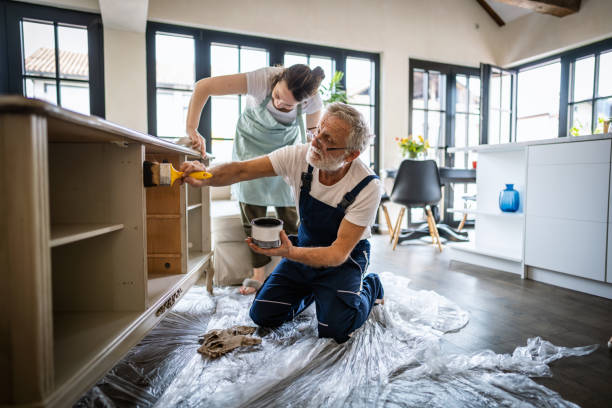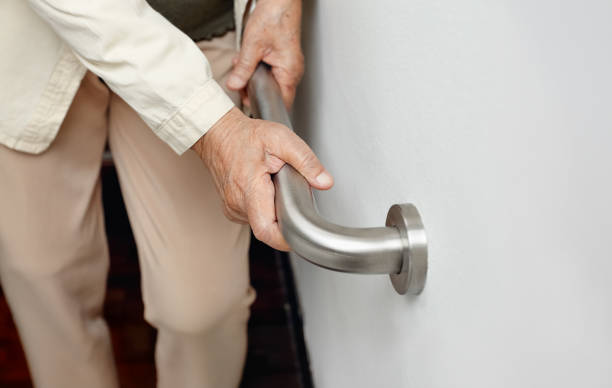As our loved ones age, creating a safe and accessible home environment becomes increasingly important. Making simple modifications to a home can enhance safety, increase independence, and improve quality of life for seniors. In this blog, we’ll explore practical and straightforward changes that can help seniors remain secure and self-sufficient at home.
Contents
- 1 Improving Accessibility Inside the Home
- 2 Reducing Fall Hazards
- 3 Enhancing Bathroom Safety
- 4 Upgrading Lighting for Better Visibility
- 5 Modifying the Kitchen for Safety and Ease
- 6 Creating a Safer Bedroom Environment
- 7 Making Exterior Areas Safer
- 8 Incorporating Smart Technology
- 9 Encouraging Independence and Peace of Mind
Improving Accessibility Inside the Home
Accessibility is key to ensuring that seniors can navigate their living spaces safely. Start by evaluating common areas such as living rooms, kitchens, and bedrooms.
One of the most effective changes is rearranging furniture to create clear pathways. This reduces the risk of tripping and makes it easier for seniors to move around. Remove unnecessary items from hallways and keep the space clutter-free. Additionally, consider lowering shelves and storage spaces to eliminate the need for stools or ladders.
Installing grab bars in key areas like bathrooms can make a world of difference. Position them near the toilet, shower, and stairways for added stability. It’s also a good idea to replace door knobs with lever-style handles, as they are easier for those with limited hand strength to operate.
Reducing Fall Hazards
Falls are among seniors’ most common accidents, but can be prevented with a few smart adjustments. Start by ensuring that floors are slip-resistant. Add non-slip mats in bathrooms, kitchens, and entryways, and replace or secure loose rugs.
Staircases are particularly hazardous, so make sure handrails are installed on both sides. If your loved one has mobility challenges, consider installing a stairlift. Proper lighting along the stairs is also crucial—install motion-activated lights for convenience and safety.
Another effective modification is to use contrasting colors on the edges of steps. This simple visual cue helps seniors distinguish the beginning and end of each step, reducing the risk of missteps.
Enhancing Bathroom Safety
Bathrooms are notorious for being accident-prone, but simple improvements can make them much safer. Installing a walk-in shower or tub can significantly reduce the risk of falls when entering or exiting. Add a sturdy shower seat to provide stability and a handheld showerhead for easy use.
Consider raising the height of the toilet or adding a toilet safety frame. This makes sitting and standing more manageable for seniors with mobility issues. Non-slip tiles or adhesive strips in the shower area can also minimize slipping risks.
Don’t forget to ensure that bathroom lighting is bright and easily accessible. Motion-sensor nightlights are especially useful for nighttime bathroom visits, reducing the risk of tripping in the dark.
Upgrading Lighting for Better Visibility
Proper lighting is essential for senior safety. As vision changes with age, it’s important to upgrade the lighting throughout the home. Use bright, energy-efficient LED bulbs in commonly used rooms.
Motion-sensing lights in hallways and stairwells are particularly helpful, as they automatically illuminate the path when someone walks by. Consider adding lighting to reduce eye strain in areas where seniors read, cook, or perform tasks.
Replace traditional light switches with rocker switches or touch-activated ones, as they are easier for seniors to operate. Additionally, nightlights should be placed in bedrooms, bathrooms, and hallways to guide movement during the night.
Modifying the Kitchen for Safety and Ease

The kitchen is often a central hub of activity, so it’s important to make it as safe and functional as possible. Install pull-out shelves in cabinets to make items more accessible without bending or reaching.
Replace heavy cookware with lighter, ergonomically designed options. This reduces the risk of injury while lifting or moving pots and pans. Clearly label items and use contrasting colors to differentiate between kitchen tools and utensils.
Consider installing an induction cooktop, which remains cool to the touch and significantly reduces the risk of burns. Also, ensure smoke detectors are working correctly and are placed near the kitchen for early fire detection.
Creating a Safer Bedroom Environment
The bedroom should be a place of comfort and security. Start by choosing a bed that is at an optimal height for easy access. A bed rail can provide additional support when getting in and out of bed.
Keep a nightstand within easy reach to store essential items such as glasses, medications, and a flashlight. Use a touch lamp or a lamp with a large, easy-to-use switch for nighttime illumination.
Non-slip rugs on either side of the bed can prevent slipping when getting up in the morning. Additionally, ensure that there is a clear, unobstructed path from the bed to the bathroom, with adequate lighting along the way.
Making Exterior Areas Safer
It’s equally important to ensure the safety of outdoor spaces. Check that all walkways and driveways are even and free of cracks. Installing railings along steps and ramps can offer crucial support.
Motion-sensor lights at entry points enhance security and help illuminate the area when returning home after dark. If your loved one uses a wheelchair or walker, installing a ramp can make entering and exiting the house much more straightforward.
Make sure that exterior doors have sturdy locks and peepholes at eye level. A video doorbell can also help seniors see who is at the door without opening it.
Incorporating Smart Technology
Incorporating smart home technology can greatly enhance seniors’ independence. Voice-activated assistants can control lights, adjust thermostats, and even make phone calls without the need to move around.
Install a medical alert system that allows seniors to call for help by pressing a button. Some devices can detect falls and automatically alert emergency contacts.
Smart door locks and security cameras also offer peace of mind, allowing caregivers to check in remotely. These additions promote safety and help seniors feel more secure in their own homes.
Encouraging Independence and Peace of Mind
Home modifications are an effective way to maintain a senior’s independence while minimizing risks. By thoughtfully designing the living environment, you can empower your loved one to live safely and comfortably.
From simple changes like better lighting to more significant upgrades like walk-in showers and smart devices, each modification contributes to a safer and more manageable home. Taking proactive steps today will help seniors maintain their independence for years to come.

